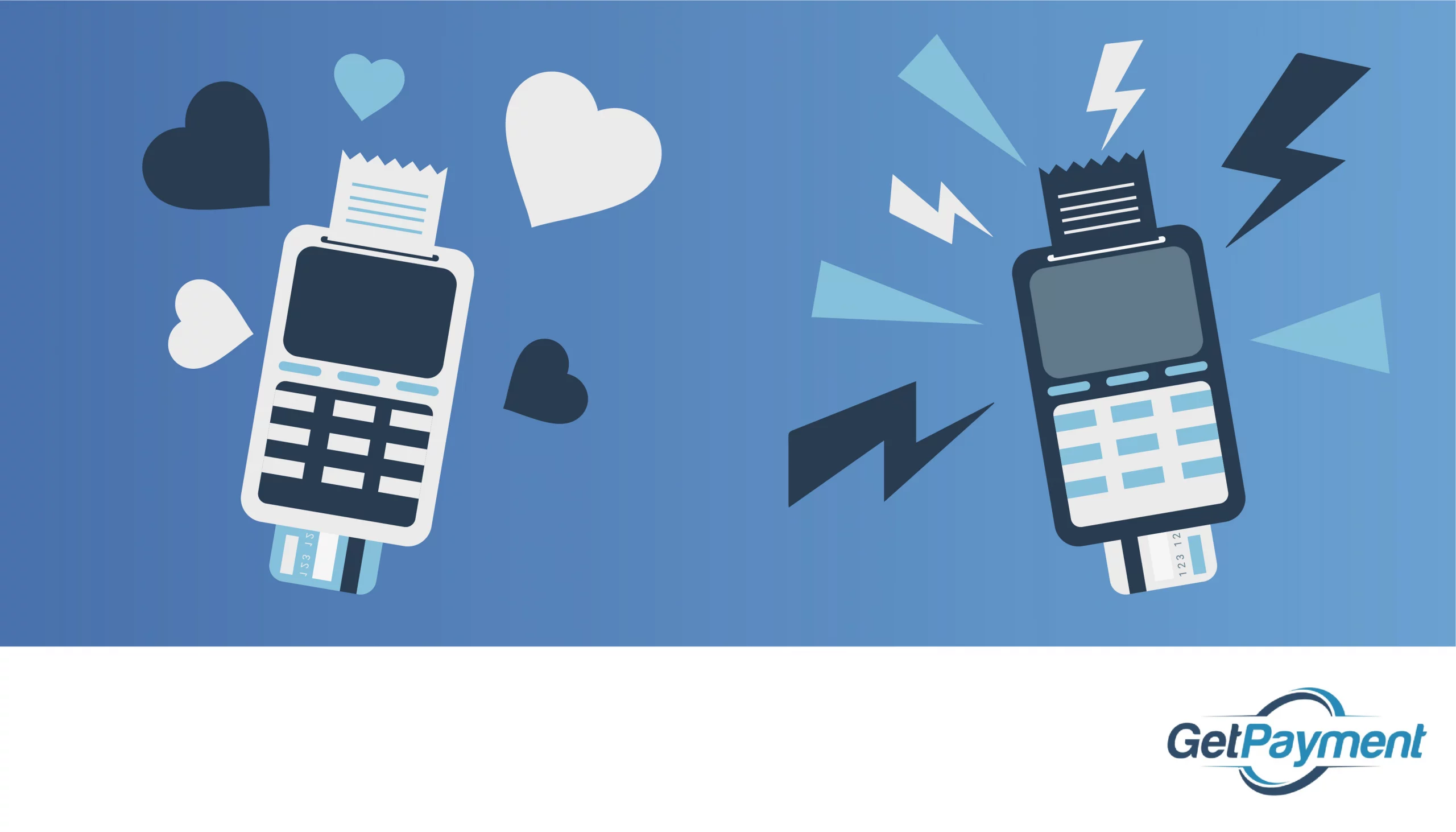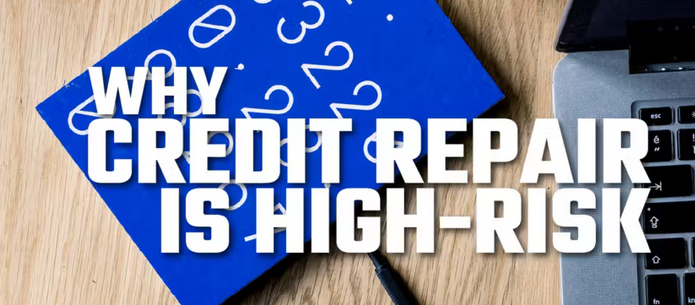The ability to accept credit and debit card payments is vital to your business—which makes your merchant services provider (MSP) one of your most important partnerships.
To allow customers to pay by card, you need an MSP to act as the middleman between the credit card network, banks, and your business account. But what happens if you aren’t satisfied with your current MSP?
If you’re unhappy with your current payment processing relationship, it’s time to break the cycle and find a better fit. You want to make the switch as smoothly as possible and end up with the right partner.
While changing merchant services providers can seem like a daunting task, it becomes much more manageable when you understand the smaller steps involved. Keep reading to find out how to best navigate this process and find a merchant services solution that makes sense for your business.
5 Signs You Need to Change Merchant Services Providers ASAP
Your payment processor should act as a partner to your business. If your relationship with your current MSP is more stressful than supportive, it’s likely time to move on. These are some of the sure signs it’s time to change merchant services:
Your Equipment Costs Are Too High
Brick-and-mortar stores require equipment to swipe, tap, and process credit and debit card payments. Even though you need this equipment to run your business, you shouldn’t be paying out the nose for the privilege of using it. In many cases, MSPs lease out this equipment for a monthly fee. Although a leasing agreement will save you some upfront costs, the total payout often exceeds the value of buying a terminal outright—especially if your MSP tries to lock you into a multi-year lease.
They Don’t Support Your Preferred Payment Types
One of the most obvious signs you should switch MSPs is that your current provider doesn’t support the payment methods you want to offer your customers. The problem might be that they don’t support specific types of transactions, like NFC-based payments that allow customers to pay with their smartwatches and mobile devices.

Or maybe the issue is that they don’t provide you with the most up-to-date technology (including EMV-compliant equipment and secure payment gateways). Whatever the case, if they don’t support your payment processing needs, you should look for a full-service merchant services provider that does.
Your Processing Rates Are on the Rise
If your processing fees are constantly increasing, it might be time to change merchant services providers. Unfortunately, some MSPs design their pricing structure to be intentionally confusing. They might offer attractive introductory offers only to hike up the rates after a certain period or obscure hidden fees behind tiered pricing plans that are further complicated by fluctuating interchange rates.
If you see fees on your bill that you don’t recognize or didn’t explicitly agree to, it’s time to switch to a merchant services provider you can trust. Look for an MSP that offers flat-rate pricing, so you’ll always know what to expect and your rates won’t change.
They Want to Lock You into a Long-term Contract
The more flexible your contract terms, the better. Not only does getting locked into a long-term contract deter you from changing providers or plans as your needs evolve, but it also gives your MSP all the leverage. They won’t have to work to keep you as a customer, which means they’re more likely to slack when it comes to providing support and customer service.
Most likely, you’ll have a limited window of opportunity to cancel your current contract before it renews without getting hit with a cancellation penalty (which can range greatly but are typically around $400). However, even with a cancellation fee, it’s likely worth making the change to get you out of an unhappy partnership.
You Can’t Access Support When You Need It
No one wins when merchant technology stops working properly. It’s frustrating to you as a business owner and upsetting to your customers who want to make purchases. Perhaps the only thing worse than needing to contact support for a technical issue is needing to contact support and not being able to reach them.
Unfortunately, poor customer service is a common problem in the payment processing world. When you combine low expectations with long-term contracts that make it difficult to switch MSPs, some providers try to get away with the bare minimum in terms of support.
But that’s not fair to you as a merchant, or to your customers.
If your MSP doesn’t offer 24/7 customer support or give you multiple channels to contact them (including Skype, live chat, etc.), you should reconsider your payment processing partnership.
How to Change Merchant Services Providers: Your Step-by-Step Guide for a Seamless Transition
Step 1: Review Your Existing Contract
If you’re currently locked into a contract, you’ll need to start by reviewing your contract details to determine the best course of action. Many providers will automatically renew your account if you don’t follow their specific instructions for cancellation, so carefully adhere to any requirements outlined in the agreement.

Read the fine print to make sure you’re not overlooking any important clauses or penalties associated with early termination. Pay closer attention to the terms outlined in your contract, including:
- Contract Length: How much time is left in your contract?
- Cancellation Policy: For instance, is there a penalty for early cancelation? If so, is paying the penalty better than being stuck in a contract you’re unhappy with?
- Renewal Date: Does your contract renew at a certain date? If so, make sure you cancel before that happens.
Step 2: Confirm the Status of Your Processing Equipment
As mentioned earlier, many MSPs lease out payment processing equipment for a monthly fee. If you’re not sure who owns the equipment, check with your current MSP before proceeding.
If you’re leasing the equipment (or if your provider has given you terminals to use for the duration of your contract), you’ll need to return all equipment that belongs to the MSP. Depending on the terms of your agreement, you may need to pay off the remainder of the lease to break the contract.
If you own the equipment yourself, meaning you purchased it outright from the MSP, you should ask prospective new providers if their system is compatible with your existing technology. Note that if the equipment is outdated (or encrypted), you’ll likely need to upgrade anyway.
Step 3: Choose a New MSP that Fits Your Needs
Next, you need to choose an MSP that can support your business goals. Make sure your new MSP offers a dedicated merchant account and can meet all of your needs for processing payments in-store and online. You should also confirm that any equipment you own, along with your eCommerce platform, CRM, and other software you use for your store, will integrate seamlessly with the new system.
It’s important to let the new MSP know you’re in the processing of canceling an existing account with another provider. This gives them a clear picture of your situation and ensures your new account and payment gateway will be ready to go when you make the switch.
3. Inform Your Former Provider to Make It Official
Once you’re confident in your choice for a new MSP, it’s time to inform your former provider that you’re closing your account. When you call or email their team to let them know you’re moving on, be prepared to stick to your guns. In some cases, they may try to persuade you to extend your contract—perhaps with a limited-time discount or other short-lived perks to distract from the bigger issues at play.
If you’re on the phone, let them know you’ll be sending a follow-up email as well. This creates a paper trail so they can’t claim you didn’t cancel soon enough and hit you with an unwanted renewal. In the email, include your merchant account details, the name of the support agent you spoke to about the cancellation, and a request for confirmation that the account has been officially closed.
Step 4: Set Up Your New Merchant Solutions
The next step is to work with your new MSP to complete the transition. A good MSP will ensure your dedicated merchant account is ready and waiting for you the moment you need it. Additionally, they’ll manage the installation of any new equipment and establish your secure payment gateway.
Step 5: Complete Onboarding and Training
In addition to installing and integrating any new equipment with your existing software and platforms, your new MSP should provide training to ensure you know how it all works. This includes onboarding protocols to bring you and your employees up to speed on operating new equipment and navigating new systems.
6. Keep Selling and Grow Your Business
With the right MSP as your payment processing partner, you can change merchant services providers without interrupting the flow of your business. Once your new systems are up and running, you can sit back and enjoy the benefits. When you switch to GetPayment, you’ll be able to grow your business with secure, reliable deposits. We’ll help scale your store with payment solutions tailored to your specific needs.
What Should You Prioritize When Switching MSPs?
When it comes to picking the right MSP for your business, these are the five most important criteria to consider:

Transparent Flat-Rate Pricing
Pricing plans shouldn’t be difficult to understand. GetPayment offers flat-rate pricing to ensure you always know what to expect. If your MSP doesn’t offer flat-rate pricing, make sure you know exactly how equipment fees, account fees, and transaction fees work. When in doubt, ask questions to clarify the fee structure. Your new provider should be more than willing to provide you with all the information you want.
Flexible Contract Terms
You don’t want to get locked into yet another long-term contract. Communication and clarity are key to ensuring your new MSP has your best interests at heart. Only sign the contract after you have carefully reviewed it and asked your MSP to clarify any unclear language.
Secure Payment Processing
Using outdated equipment puts you at a competitive disadvantage and opens your business (and your customers) up to security risks.
GetPayments offers built-in fraud protection and secure processing for every type of payment—including payment gateways for eCommerce, virtual terminals, mobile credit card swipers, and a range of POS systems for retailers. We’ll also set you up with a dedicated merchant account, so you can trust that every transaction will be processed securely.
Reliable 24/7 Support
Don’t settle for mediocre customer support. Your MSP should be a partner, ready to serve and support your business at a moment’s notice. With GetPayment, you’ll have access to 24/7 customer support and a dedicated account team working to protect your income.
Custom Merchant Solutions
To make sure your new MSP offers the right services and terms for your business. ask the following questions:
- Do they support every type of payment you want to accept (including contactless payments, mobile, online purchases, virtual terminals, etc.)?
- Will their solutions integrate with your CRM and marketing automation platform?
- Will they provide they set you up with a dedicated merchant account?
- Can they offer next-day funding, so deposits appear in your merchant account on the next business day?
Support Your Business by Partnering with Right MSP
If you’re on the fence about whether to change merchant services providers, consider this: The longer you stay with an MSP that doesn’t serve your best interests, the more it’ll cost you (in time, money, and frustration) in the long run. By changing merchant services providers ASAP, you can enter a new partnership that positions your business for success and helps you scale.
As a full-service merchant services provider, GetPayment will set you up with a dedicated merchant account, next-day funding, secure transaction processing, 24/7 support, and the confidence of knowing your deposits will keep flowing into your account as you grow.
Contact us today for a free analysis of your current payment processing relationship. We’ll identify any opportunities for improvement before you make the switch—and then help you do so seamlessly, without interruption to your business.




